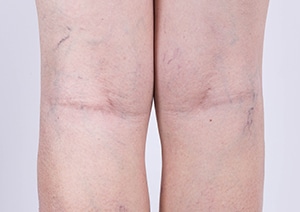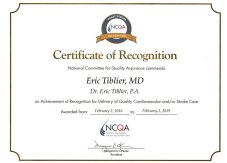Echocardiography
 Spider veins get their name from the web of red or blue veins that start to appear around your legs as you age. They are dilated superficial blood vessels, much like varicose veins, but are often smaller and closer to the skin. They appear most frequently in areas behind the knee but can also appear anywhere on the body.
Spider veins get their name from the web of red or blue veins that start to appear around your legs as you age. They are dilated superficial blood vessels, much like varicose veins, but are often smaller and closer to the skin. They appear most frequently in areas behind the knee but can also appear anywhere on the body.
What Are The Symptoms of Spider Veins?
There are a number of symptoms attributed to spider veins in addition to the appearance of patchwork red and blue veins that you can see. People with spider veins may also experience:
- Swelling
- Tiredness in the legs
- Heaviness in the legs
What Causes Spider Veins?
Spider veins are caused by increased pressure in your veins. Doctors don’t yet know the exact reason why some people develop spider veins, but they do know that the tendency to get them is hereditary, and they are more common as you get older. It is also known that people who stand for a long time, such as nurses and teachers, tend to increase the amount of pressure in the veins of the legs and are more likely to develop spider veins.
How Can I Lower The Risk Of Developing Spider Veins?
Because the tendency to get spider veins is somewhat hereditary, you may not be able to totally prevent spider veins from appearing. However, there are steps you can take to loser your risk:
- Relieving Vein Pressure: By keeping your weight under control and avoiding standing for long periods of time you can relieve some of the pressure in your veins.
- Keep The Blood Flowing: Exercising your legs by running or walking can increase blood circulation and strengthen your leg muscles.
- Get Support: If you stand on your feet for long periods of time, wearing a lightweight compression stocking can help manage spider vein symptoms.
- Prop Up Your Feet: Elevating your legs can be a good treatment for spider veins as well.
- Wear Sunscreen: If you have light skin, sun exposure can damage blood vessels causing spider veins on your cheeks or nose.
- Have Any Varicose Veins Treated: Varicose veins are larger, ropy-looking veins with nonworking valves. Having your varicose veins treated can reduce the pressure in your veins reducing the likelihood of spider veins also developing.
How Can You Treat Spider Veins?
We offer two treatment options which both offer great results for the treatment of spider veins.
- Endovenous Laser Treatment (EVLT): Endovenous laser treatment or EVLT for short is a process that uses a precise laser light to seal the valve of any veins and cause them to empty and collapse. This method is effective on all sizes of spider veins and leaves little to no downtime after.
- Sclerotherapy: Sclerotherapy is one of the more widely recognized and recommended treatments for spider veins. It involves the injection of a specialized solution into any spider veins causing them to become sealed and to fade away.


